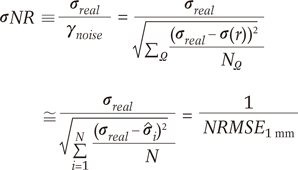1. Haacke EM, Petropoulos LS, Nilges EW, Wu DH. Extraction of conductivity and permittivity using magnetic resonance imaging. Phys Med Biol. 1991; 36:723–734.
2. Katscher U, Voigt T, Findeklee C, Vernickel P, Nehrke K, Dossel O. Determination of electric conductivity and local SAR via B1 mapping. IEEE Trans Med Imaging. 2009; 28:1365–1374.
3. Joines WT, Zhang Y, Li C, Jirtle RL. The measured electrical properties of normal and malignant human tissues from 50 to 900 MHz. Med Phys. 1994; 21:547–550.
4. Schaefer M, Gross W, Ackemann J, Gebhard MM. The complex dielectric spectrum of heart tissue during ischemia. Bioelectrochemistry. 2002; 58:171–180.
5. Haemmerich D, Staelin ST, Tsai JZ, Tungjitkusolmun S, Mahvi DM, Webster JG. In vivo electrical conductivity of hepatic tumours. Physiol Meas. 2003; 24:251–260.
6. Fallert MA, Mirotznik MS, Downing SW, et al. Myocardial electrical-impedance mapping of iscemic sheep hearts and healing aneurysm. Circulation. 1993; 87:199–207.
7. Voigt T, Homann H, Katscher U, Doessel O. Patient-individual local SAR determination: in vivo measurements and numerical validation. Magn Reson Med. 2012; 68:1117–1126.
8. Yarnykh VL. Actual flip-angle imaging in the pulsed steady state: a method for rapid three-dimensional mapping of the transmitted radiofrequency field. Magn Reson Med. 2007; 57:192–200.
9. Voigt T, Nehrke K, Doessel O, Katscher U. T1 corrected B1 mapping using multi-TR gradient echo sequences. Magn Reson Med. 2010; 64:725–733.
10. Stollberger R, Wach P. Imaging of the active B1 field in vivo. Magn Reson Med. 1996; 35:246–251.
11. Sacolick LI, Wiesinger F, Hancu I, Vogel MW. B1 mapping by Bloch-Siegert shift. Magn Reson Med. 2010; 63:1315–1322.
12. Kim DH, Gho SM, Choi N, Liu C. Simultaneous Electromagnetic Property Imaging using multiecho gradient echo. In : Proceedings of the 20th Annual Meeting of ISMRM; Melbourne, Australia. 2012. p. 3464.
13. Voigt T, Katscher U, Doessel O. Quantitative conductivity and permittivity imaging of the human brain using electric properties tomography. Magn Reson Med. 2011; 66:456–466.
14. Bulumulla SB, Lee S, Yeo DTB. Conductivity and permittivity imaging at 3.0 T. Concepts Magn Reson Part B Magn Reson Eng. 2012; 41B(1):13–21.
15. van Lier AL, Brunner DO, Pruessmann KP, et al. B1(+) phase mapping at 7 T and its application for in vivo electrical conductivity mapping. Magn Reson Med. 2012; 67:552–561.
16. Seo JK, Kim MO, Lee J, et al. Error analysis of nonconstant admittivity for MR-based electric property imaging. IEEE Trans Med Imaging. 2012; 31:430–437.
17. van Lier AL, Voigt T, Katscher U, van den Berg CA. Comparing Electric Properties Tomography at 1.5, 3 and 7 T. In : Proceedings of the 19th Annual Meeting of ISMRM; Montreal, Canada. 2011. p. 125.
18. van den Bergen B, Stolk CC, Berg JB, Lagendijk JJ, Van den Berg CA. Ultra fast electromagnetic field computations for RF multi-transmit techniques in high field MRI. Phys Med Biol. 2009; 54:1253–1264.
19. Gudbjartsson H, Patz S. The Rician distribution of noisy MRI data. Magn Reson Med. 1995; 34:910–914.
20. Morrell GR, Schabel MC. An analysis of the accuracy of magnetic resonance flip angle measurement methods. Phys Med Biol. 2010; 55:6157–6174.
22. Stogryn A. Equations for calculating the dielectric constant of saline water. IEEE Trans Microw Theory Tech. 1971; 19:733–736.
23. Gabriel S, Lau RW, Gabriel C. The dielectric properties of biological tissues: II. Measurements in the frequency range 10 Hz to 20 GHz. Phys Med Biol. 1996; 41:2251–2269.
24. Zypman FR. MRI electromagnetic field penetration in cylindrical objects. Comput Biol Med. 1996; 26:161–175.
 , is assumed as the B1+ phase due to the assumption regarding the equality of phase. However, as the main field (B0) increases, assumption about the phase equality becomes weaker and reconstructed conductivity map becomes inhomogeneous even over homogeneous regions (17). In the case of B1+ phase based conductivity reconstruction, an additional systemic error occurs inside the object due to the nonnegligible B1+ magnitude variation.
, is assumed as the B1+ phase due to the assumption regarding the equality of phase. However, as the main field (B0) increases, assumption about the phase equality becomes weaker and reconstructed conductivity map becomes inhomogeneous even over homogeneous regions (17). In the case of B1+ phase based conductivity reconstruction, an additional systemic error occurs inside the object due to the nonnegligible B1+ magnitude variation. . This ratio is inversely proportional to the NA to a degree of 2/3 (0.9992 of R2 value, Fig. 4c. Since NA is almost proportional to square of the radius, the NRMSE for a Rmm object is related to the standard NRMSE1 mm as the following: .
. This ratio is inversely proportional to the NA to a degree of 2/3 (0.9992 of R2 value, Fig. 4c. Since NA is almost proportional to square of the radius, the NRMSE for a Rmm object is related to the standard NRMSE1 mm as the following: .




 PDF
PDF ePub
ePub Citation
Citation Print
Print




















 XML Download
XML Download